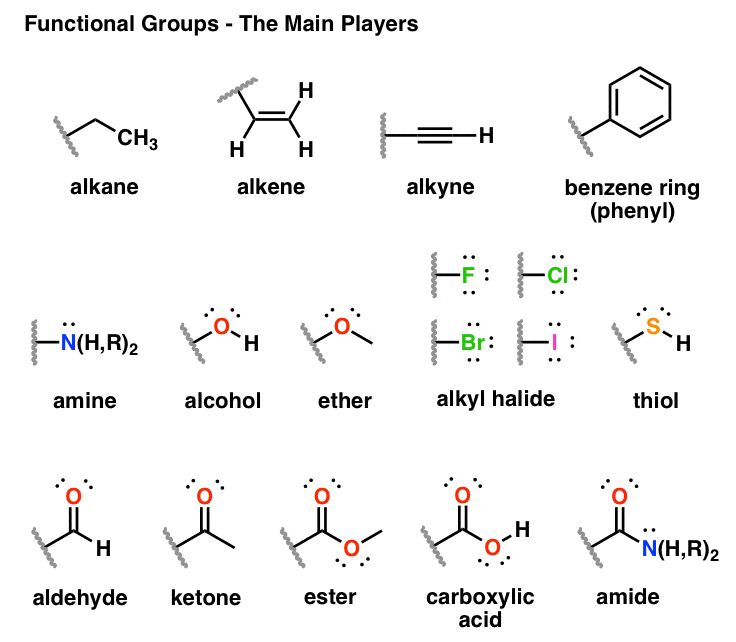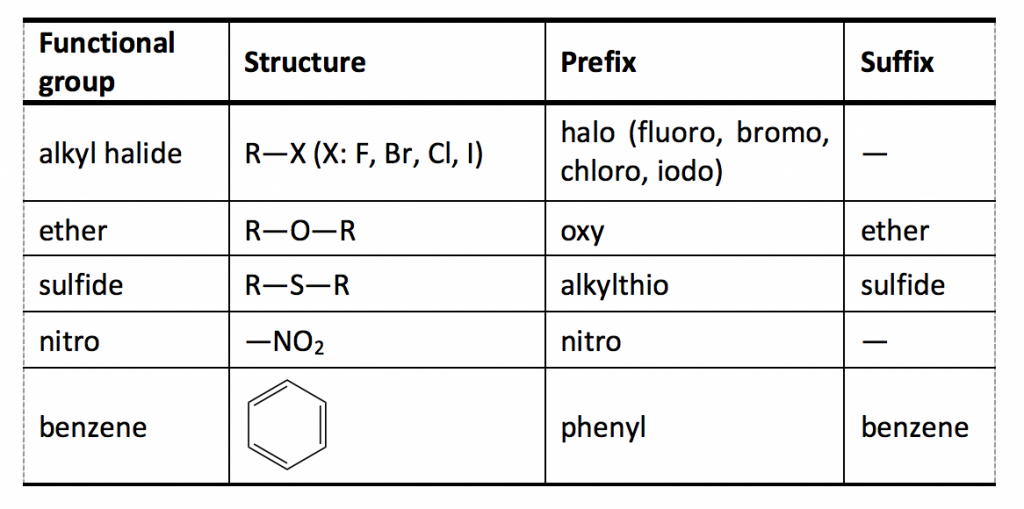CBSE Class 11 Chemistry Chapter 12 Revision Notes
Chapter: 12 Organic Chemistry: Some Basic Principles and Techniques Revision Notes
Organic Chemistry
Organic chemistry is the study of hydrocarbons and their derivatives, and it is a branch of chemistry.
Carbon Compounds and Their Shapes:
- The s and p orbitals are important in the hybridisation of organic or carbon molecules.
- This results in three forms of hybridisation: sp3, sp4, and sp5 (in alkanes) – sp2 is a tetrahedral form (in alkenes) – Spherical structure spherical structure spherical structure spherical (in alkynes) – Molecule with a linear shape
- The chemical characteristics of an organic molecule are determined by the functional group, which is an atom or group of atoms linked in a certain way.
- The hydroxyl group (—OH), aldehyde group (—CHO), and carboxylic acid group (—COOH) are only a few examples.
Why Are There So Many Organic Compounds?
(a) Catenation It is a self-combination propensity that is strongest in carbon. A carbon atom can form single, double, or triple bonds with other carbon atoms. As a result, it produces a greater number of compounds than the others.
(b) Small size and tetravalency Carbon, being a tetravalent element, may form bonds with four additional C atoms or monovalent atoms. Carbon may react with oxygen, hydrogen, chlorine, sulphur, nitrogen, and phosphorus to produce compounds. The type of the element or group linked to the carbon determines the characteristics of these compounds.
General Characteristics of Organic Compounds
-
Carbon compounds including H, 0, N, S, P, F, CI, Br, and 1.
-
These can be present in most living species. carbs, proteins, and so forth.
-
These can be liquids, gases, or solids.
-
Because they are covalent, they have a low boiling and melting point and are soluble in organic solvents.
-
They’re usually combustible and volatile.
-
They do not conduct electricity because of the absence of free ions.
-
They have a unique appearance and odour.
CLASSIFICATION OF CARBON COMPOUNDS
1. Based on the number of Cs attached
(i) The first carbon atom A primary or 1° carbon atom is one that has only one other carbon atom bonded to it.
(ii) Carbon atoms with a secondary carbon atom Secondary or 2°carbon atoms are formed when a carbon atom is joined to two additional carbon atoms.
iii) Carbon atom in the tertiary state The tertiary or 3° carbon atom is formed when a carbon atom is joined to three additional carbon atoms.
(iv) Carbon atom from the Quaternary Period The quaternary or 40 carbon atom is formed when a carbon atom is joined to four additional carbon atoms.
The following is the reactivity order of carbon atoms: 3° vs. 2° vs. 1°.
On the Basis of Position of Functional Group
(i) carbon dioxide: The functional group is directly connected to carbon.
(ii) Carbon that is bonded to the n-carbon directly.
Hydrogen Atom Classification
1°-hydrogen (primary) is connected to a ten-carbon molecule.
2°-hydrogen linked to 2°-carbon (secondary).
3°-hydrogen linked to 3°-carbon (tertiary).
-
the element hydrogen (s) Hydrogens linked to the n-carbon atom.
-
the element hydrogen (s) Hydrogens with a carbon atom bonded to them.
Functional Group
- A functional group is an atom (-CI, -Br, etc.) or a group of atoms (-COOH, – CHO) that is responsible for the chemical characteristics of a molecule.
- Functional groupings include double and triple bonds.
- The R–F functional group is a subset of the R–F functional group.
- R stands for alkyl group, which has just one bond; alkenyl stands for double bond, and alkynyl stands for triple bond.
Homologous Series
-
Homologous series are those in which the molecular formulas of adjacent members differ by a – CH2 unit, and homologous members are those in which the molecular formulas of adjacent members differ by a – CH2 unit.
-
The following are some of the series’ general characteristics:
-
The functional groups of all homologues are the same. As a result, their chemical characteristics are almost identical.
-
A series’ members all have the same general formula.
-
Almost identical approaches may be used to prepare all of the members.
-
The physical characteristics of a series gradually change as the molecular weight of the series increases.
-
Different Formulae Representation
The following are some examples of how an organic compound might be represented:
- Formula in its entirety
It vividly depicts all of the bonds that exist between any two atoms.
- Formula in Condensed Form
All of the bonds aren’t depicted clearly in it.
- Formula for Bond Lines
In such formulas, it is assumed that the requisite number of H-atoms are present where they are required (to meet carbon’s tetravalency)
Nomenclature of Organic Compounds
Trivial System
- It is the earliest approach for deriving names from a source or an attribute.
- The majority of them are taken from Latin or Greek names, such as, acetic acid (acetum = vinegar), oxalic acid (oxalic), malic acid (pyrus malus), citric acid (citric), formic acid (obtained from red ants), oxalic acid (oxalic), malic acid (pyrus malus), citric acid (citric), formic acid (obtained from red ants)
The International Union of Pure and Applied Chemistry (IUPAC)
-
The improved and widely used IUPAC (International Union of Pure and Applied Chemistry) approach was established in 1957.
-
These regulations are updated by IUPAC on a regular basis. We are using the IUPAC nomenclature standards from 1993.
-
The name of an organic compound has three elements, according to the IUPAC system: (i) word root, (ii) suffix, and (iii) prefix.
(i) Word root: The number of carbon atoms in the primary chain, which is the longest conceivable chain of carbon atoms, is represented by the word root.
(ii) Suffix: There are two sorts of suffix: main and secondary.
(a) Primary Suffix: It denotes the kind of carbon atom link.
(iii) Prefix: A prefix occurs before the word root in an IUPAC name. There are two sorts of prefixes:
(a) Main prefix: The primary prefix cyclo, for example, is used to distinguish cyclic compounds.
(b) Secondary prefix: Some functional groups are termed substituents and are designated by secondary prefixes.
Naming of Functional Group-Containing Compounds
- The functional group is connected to the carbon atoms with the lowest possible number in the longest chain of carbon atoms carrying the functional group.
- When it comes to polyfunctional compounds, one of the functional groups is chosen as the primary functional group, and the molecule is called after it.
- The order of preference is used to determine the primary functional group.
Isomerism
-
Isomerism occurs when two or more compounds have the same molecular formula but distinct structural formulas, as well as differing physical and chemical characteristics.
-
Isomers are the name for such compounds.
There are two types:
(1) Isomerism in Structure
(2) Stigmatization
(1) Structural Isomerism: Compounds with the same molecular formula but different structural formulas differ in the arrangement of atoms demonstrate structural isomerism.
(2) Stereoisomerism: Stereoisomerism is a phenomena that occurs when isomerism is generated by various configurations of atoms or groups in space.
The steroeoisomers contain the same structural formula, but their atoms are arranged differently in space. There are two forms of stereoisomerism:
(i) Cis-Trans Isomerism or Geometrical Isomerism
(ii) Optical Isomerism
Organic Reaction Mechanisms: Basic Concepts
A covalent bond’s fission: Fission can occur in two ways in a covalent bond:
(i) By Homolytic Fission or Homolysis (ii) By Heterolytic Fission or Heterolysis
Resonance Structure
- A single structure cannot accurately describe a large number of chemical molecules.
- The length of a carbon-carbon double bond is 1.34 A.
- The length of a single carbon-carbon bond is 1.54A. However, experimental evidence has shown that all carbon-carbon bonds in benzene are similar and have the same bond length (1.39A).
- As a result, benzene’s structure cannot be described by a single structure. ‘He energetically comparable structures I and II can both be used to describe it. Resonance structures are the names given to the two structures.
- When a double or triple bond is attacked by an electrophile E+ (a reagent), the two electrons from the bond are totally transferred to one atom or the other, resulting in the electromeric effect (E Effect).
Orbital Concept of Hyperconjugation
- It entails the delocalization of o electrons in an alkyl group’s C—H bond when it is connected directly to an unsaturated system atom or an atom with an unshared p-orbital.
- Consider CH3CH2 (ethyl cation), which possesses an empty p-orbital due to the positively charged carbon atom.
Organic Compounds Qualitative Analysis
Carbon and hydrogen detection: Put Copper Oxide Test: About three times the weight of dry copper oxide is mixed in with the organic component. After that, the mixture is transferred to a hard glass test tube with a bent delivery tube. The other end is dipped in lime water in a separate test tube.
Sodium Test for Halogens
- The halogens in the organic component are transformed to sodium halides when they fuse with sodium.
- Add silver nitrate solution to a portion of the’sodium extract’ that has been acidified with dilute nitric acid. Chlorine is shown by a white ppt. soluble in ammonia.
- Bromine is indicated by a yellow ppt. that is sparingly soluble in ammonia.
- Iodine is indicated by a yellow ppt. that is insoluble in ammonia.
- When the molecule also contains nitrogen or sulphur, the sodium extract is heated with strong nitric acid before being tested for halogens to destroy the cyanide and sulphite generated during the sodium fusion.
- When silver nitrate is added, these radicals will create a white and black precipitate if they are not eliminated.
QUANTITATIVE EVALUTION
Carbon and hydrogen estimation
- In one process, both carbon and hydrogen are calculated. In the presence of abundant oxygen and copper (II) oxide, a known weight of an organic molecule is burned. Carbon is oxidised to carbon dioxide while hydrogen is oxidised to water.
- The weight of carbon dioxide and water generated is computed, as well as the carbon and hydrogen content of the original material.
Nitrogen estimation
(i) Dumas method: This approach is based on the fact that when nitrogenous chemicals are burned with copper oxide in a carbon dioxide environment, free nitrogen is produced.
By passing through a heated copper spiral, traces of nitrogen oxides, which may occur in some situations, are converted to elemental nitrogen.
(ii) Kjeldahl’s Methods: Kjeldahl’s technique is based on the fact that an organic molecule containing nitrogen is transformed to ammonium sulphate when heated with con. H2S04. The resulting liquid is subsequently treated with too much alkali, and the released ammonia gas is absorbed with too much acid. Finding the quantity of acid neutralised by back filtration with a standard alkali yields the amount of ammonia.
]]>

